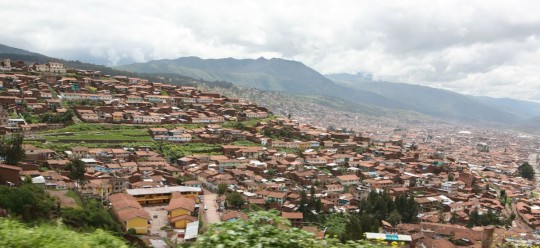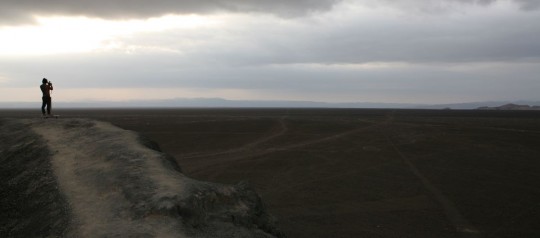
As usual now, it has been a long time since my last post. I can’t say it’s getting easier to get an internet access, and the last few days have been very busy, as you will read.
When we arrived in Lima, we checked in a backpacker hotel in the Miraflores district. It was the simplest solution, since opening our tent in the center of Lima would have been challenging.
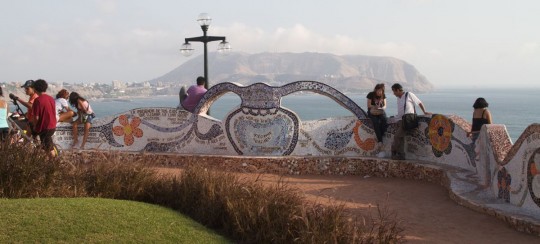
We stayed two nights there (US$5 in any backpacker hotel, nowhere specific to recommend, god luck to get hot water), and I tried to get on top of things I had to do, like photo editing, or writing down notes for the blog. Dan and Nadia enjoyed the very cosmopolite area of the city a lot, and we took advantage of it by getting pizza in the neighborhood Italian street.
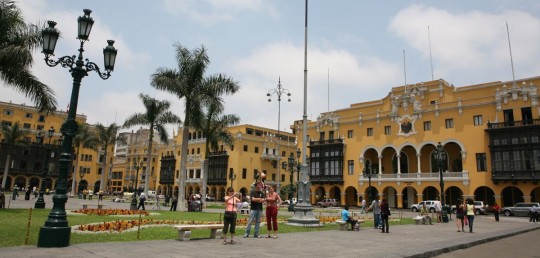
The second day, we went for a visit of the city center. Because of the heavy traffic there, it is not considered a very relaxing experience to drive through, as we experienced.
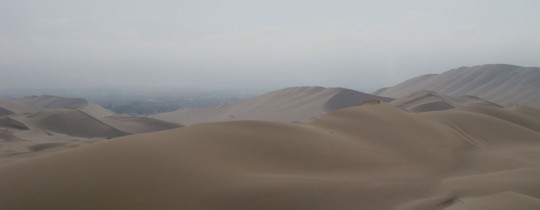
Out of the city, we followed the route south, and sped to Huacachina, a small oasis surrounded by huge sand dunes. We spent a night there, and in the morning, went for a buggy tour in the dunes, as well as some sand surfing. We then went to get food for the upcoming days, and we were back on the road.
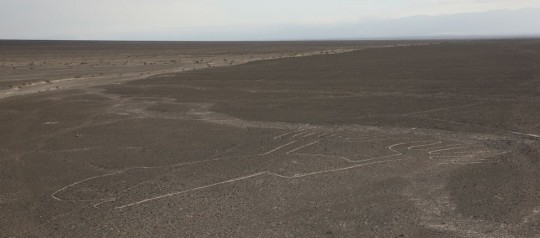
Nazca, our next stop, is famous for its giant lines and geometric symbols drawn on the ground. Spread across 500 square kilometers (200 sq. mi.) in the pampa, the cryptic symbols are still a mystery, as it is not know who created them, and why. As mystified as others, we spent the night in the nearby city.
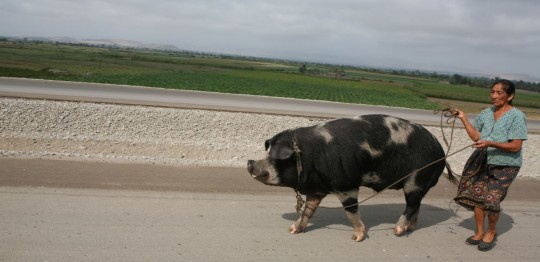
At this point, we knew the easy time was finished. Ahead of us, we had three days of road going up the mountain to reach the city of Cusco. Cusco is known for being the place people leave to go visit the Machu Picchu, unfortunately closed this year because of rain and landslides.
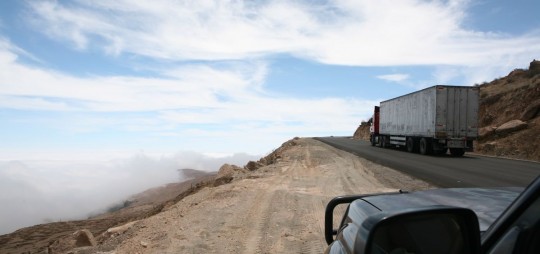
We heard from travelers that the road was cut close to the city, because of the same weather related issues, and that we may not be able to reach it. Regardless, we decided to give it a try, and one sunny morning, early, we went east toward the mountains.
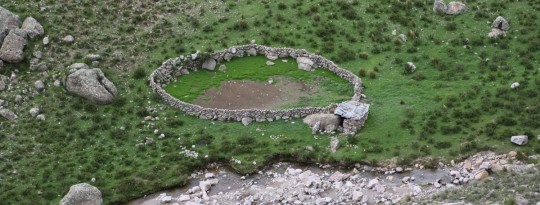
The road was in good shape, the scenery amazing, and the first day, we were able to drive 200 kilometers (125 mi.) of the 640 we would have to do.
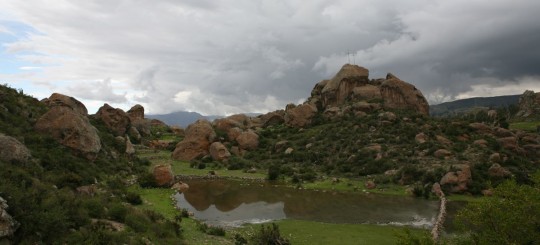
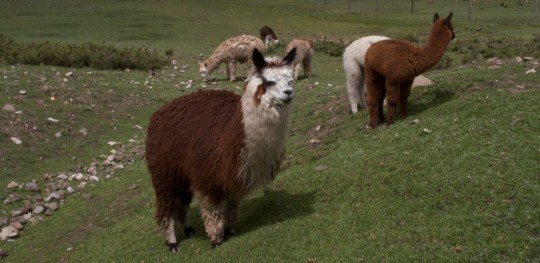
Around 6 p.m., as we had reached an altitude of 4,400 meters (14,500 feet), we discovered a large lake and decided to leave the main road to get closer to it and set camp for the night. At this altitude, the highland soil is like a sponge full of water, and I failed to notice the danger of getting trapped. As we got closer to the lake, the soil got more unstable, and finally, as we were passing a small water arm, the truck got caught deep in the mud.
At this point, we went out of the vehicle, got rocks to put under the tires, dug out wagons of mud, but could not get the truck out of the pond.
Our next bright idea was to try to get help from the road. I thought it would be hard to find someone who would risk to come down to help us out, but we tried. Few minutes after, we had our suicidal candidates. Two Peruvian truck drivers decided to let their trailer up on the road, and come down to try to haul us out.
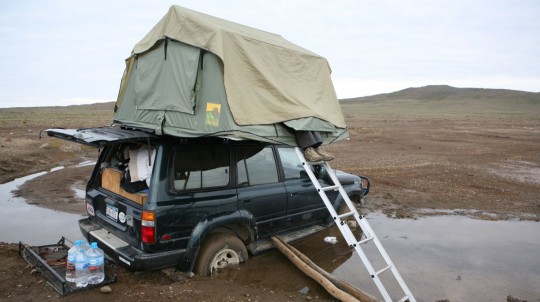
Soon enough, they were in the exact same situation than we were, unable to move an inch in any direction. For few hours and as night was falling, we dug again, tried to build ramps of rocks, piled wood sticks under the wheels of the heavy truck with no success.
By then, we knew what would be our next problem. Altitude. Several times during our trip, we had to go pretty high, and had no problems with that, so we assumed we got acclimated to higher ground, and that altitude sickness could not get us. But this time was different. We were now higher than 4,000 meters, which seemed to trigger a stronger reaction. We were exhausted after spending hours moving rocks and digging, and felt terrible headaches and chest pain. It was pitch black and the temperature was falling quickly as we opened the tent in the hole of mud to try to get some sleep. The Peruvians were also going to sleep in the cabin of their truck.
We were still really sick in the morning, and continued the work to push the Peruvian truck out of the mud. Eventually, they were able to get out, but of course, after twelve hours in hell, they would not try to help us out another time.
All morning we tried to dig out my truck with no success. Every half hour, I would just collapse on the ground, and wait for my body to let me know I was still alive. Nadia was on the road, trying to stop a truck that could help us out. Around noon, an Argentinean family stopped in a Toyota truck, and gave it a try, but my truck would not move at all.
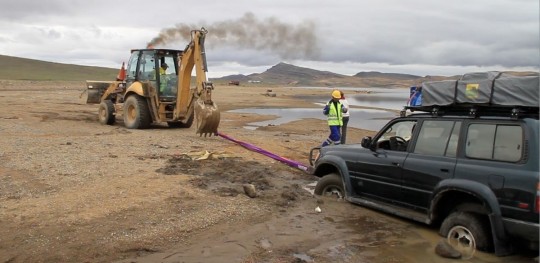
A bit after the Argentinians left, they were able to alert road workers down the road, and at 1 p.m., they came over with one of their machines, and finally got us out of our hole. You can only imagine how happy we were to be back on the asphalt, and how happy the workers were to see the green colors of American banknotes. Soon after, we went down in altitude and were feeling better.
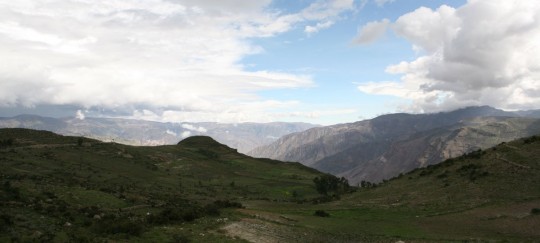
At night, we camped in a village along the river and spent time with kids down there. The morning was rainy, which was a concern since rocks were constantly falling off the mountain.
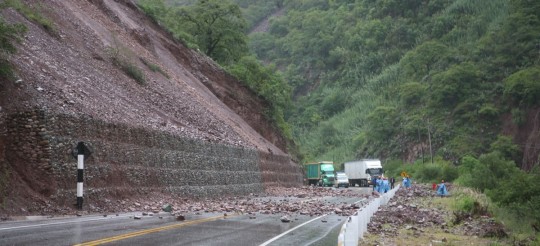
Finally, we arrived to a location where the road was covered by rocks, and stones kept coming from high up. At the end we had no choice but go straight through the stone rain and hope for the best, as other were doing. Maybe because we had been unlucky earlier, this time, we went through without problem, as did Felix, who arrived with his RV few minutes after us. This was definitely the scariest moment of our way up to Cusco.
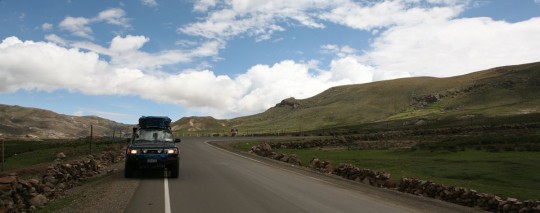
But we were lucky only for a short time. Few hours later, 30 kilometers after Abancay and going up, I felt that the brakes were getting weaker and weaker. We decided to backtrack to the city in low range to have the brake looked at. Down there, at the Toyota garage, they decided some air probably got in the system, and they purged the circuit. It was now too late for us to get to Cusco, as the road was only open few hours every day, so we decided to check in an hotel, and got diner with Hector, a English-speaking Peruvian we met at the garage. Dan and I also went for drinks with him in one of the city discotheque. At the end, after few tea-pisco, we were happy to be stranded there.
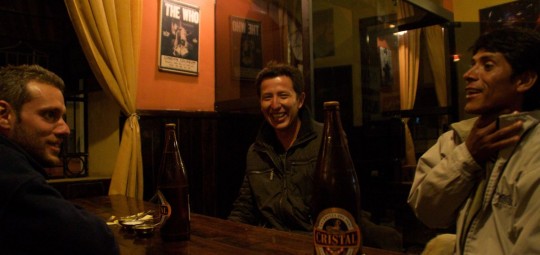
The morning after, at 6 a.m., we were leaving the city determined to make it to Cusco by the end of the day. Three hours after departure, we got to the difficult part where the road had been washed out, and drove in the mud for 20 kilometers.
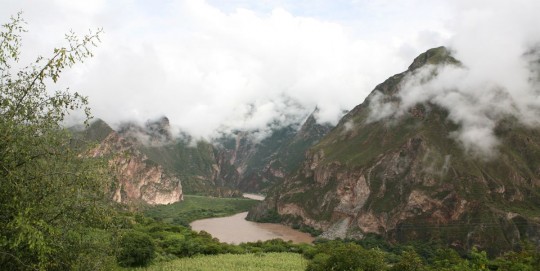
Everything went well, and after four days of travel, we arrived in the city, exhausted but happy to be alive. Dan will leave us on Thursday to get back to the U.S., and learn again to live like a normal person.
